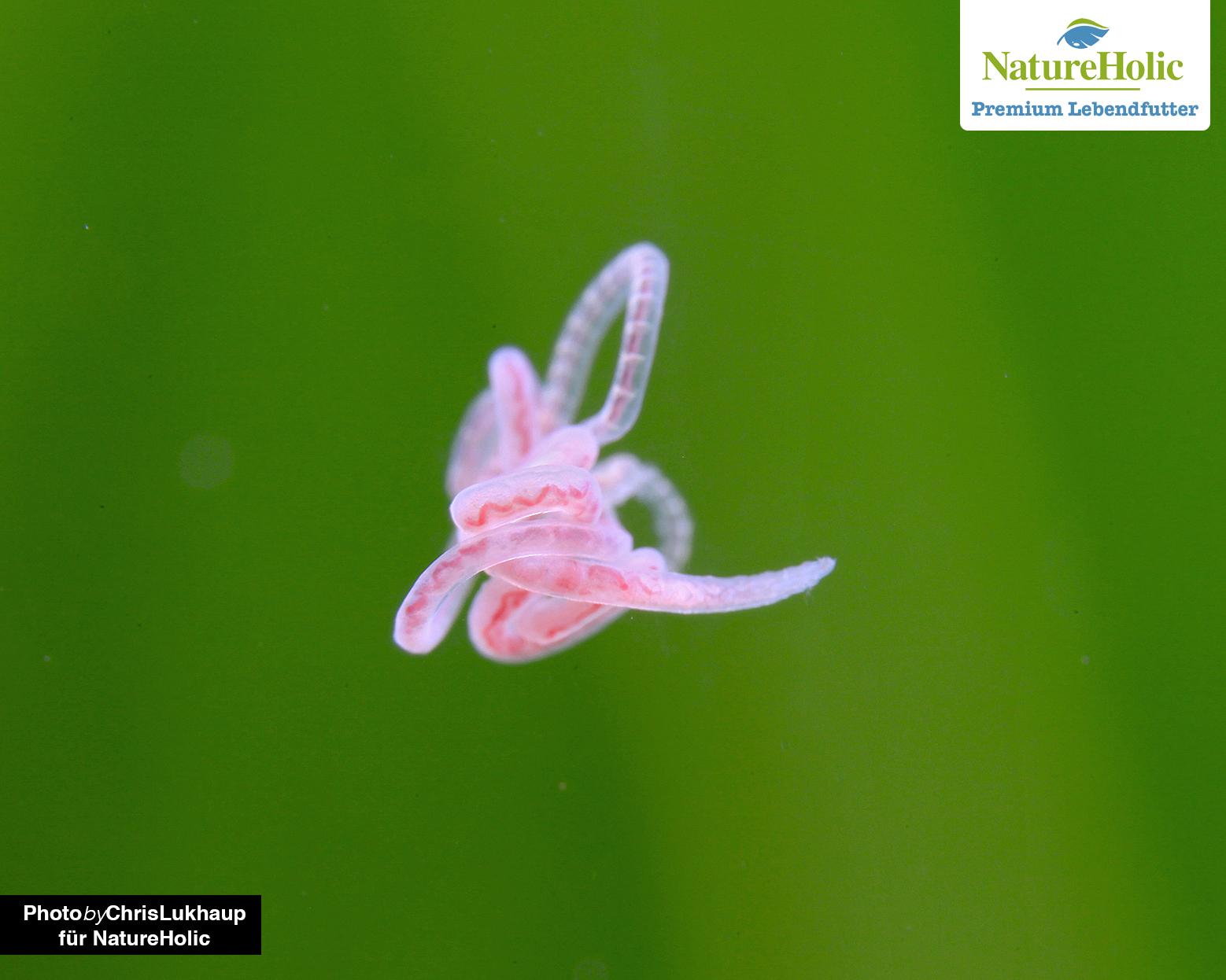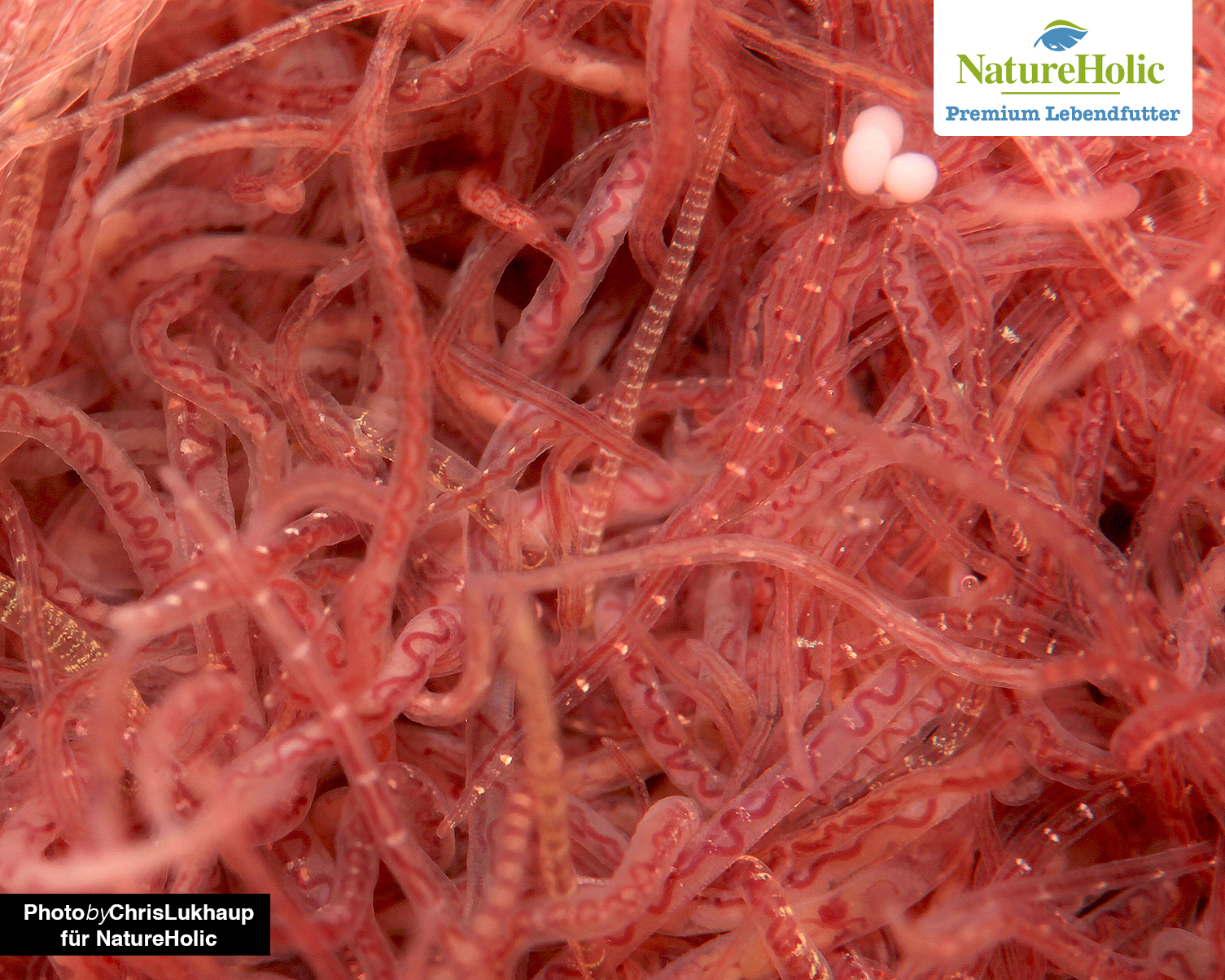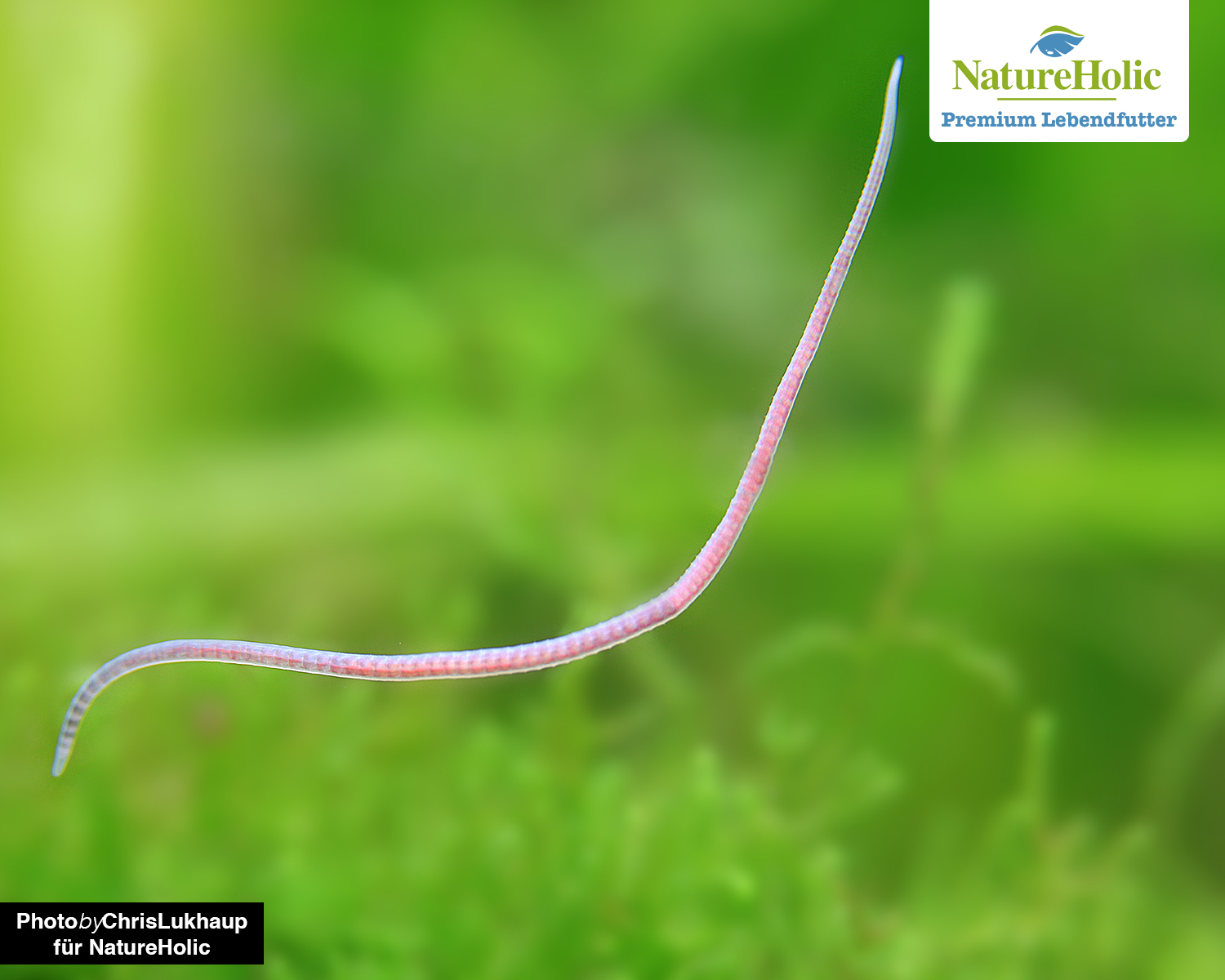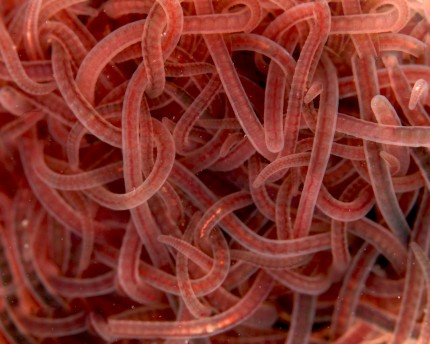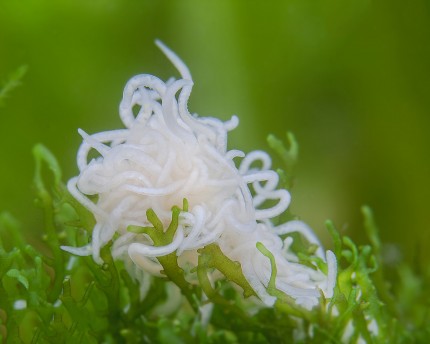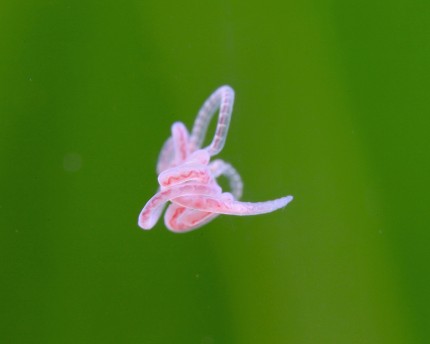Worms as live food in the aquarium for fish and co
Worms are a very good restorative food for fish and invertebrates such as shrimps, large-armed shrimps, crabs and shrimps. Even many snails do not say no to a juicy worm. However, worms usually contain a relatively high amount of fat, so they should not be on the aquarium inhabitants' menu on a daily basis.
Stream tube worms / Tubifex(buy)
Tubifex contain hemoglobin, which gives them their red color. These worms live year-round in freshwater where they grow between 5-8 inches long. They live in living tubes and only extend their rear end outside to take in oxygen. The stream tube worm belongs to the fewborsters and eats organic remains. It can happen in exceptional cases that live Tubifex settle in the aquarium and then occur there, for example, as a permanent live food source for armored catfish.
Since Tubifex can survive even in highly polluted waters, it is risky to pond them yourself in the wild. Our Tubifex come from safe, low-pollution sources and can therefore be fed without hesitation.
Locomotion
Tubifex crawl on the ground and swim sinuously. They form the typical worm balls that look like little pink balls of mini spaghetti.
Food
Organic leftovers
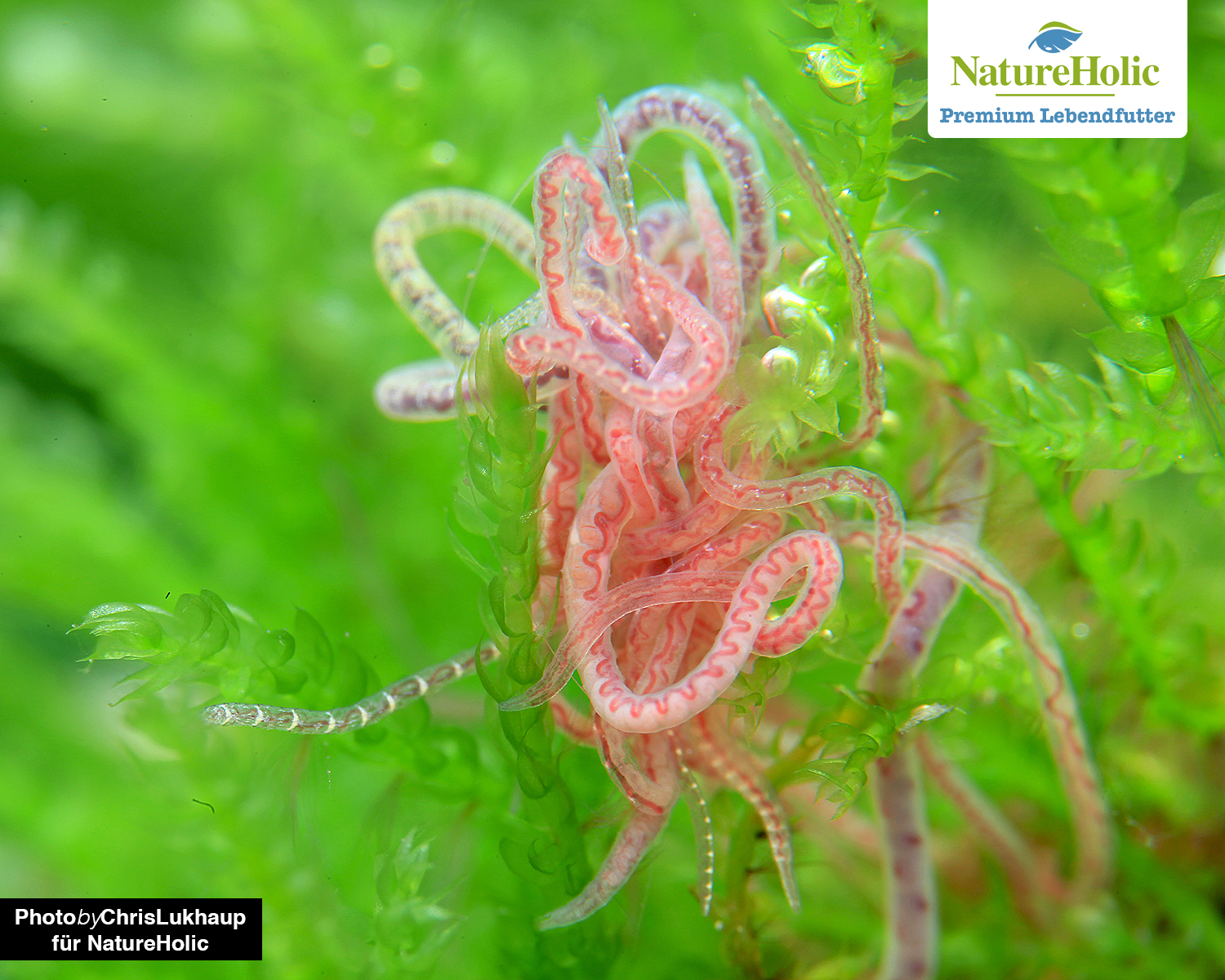
Who eats Tubifex?
In addition to fish, young crayfish, dwarf crayfish, and North American crayfish of all ages like to eat Tubifex. Shrimp also nibble on the worms from time to time, but not as intensively.
Breeding kit
Tubifex are easy to keep and breed in a filterless aquarium with coarse gravel. Feeding is done with mulm and decaying leaves.
Value
Tubifex contain slightly more fat than other live foods and therefore should not be given daily.
Shiny worms(buy)
Lumbriculus variegatus is closely related to the earthworm, and you can clearly see that. The reddish worms are known as shiner worms, blackworms, or Dennerle worms. They contain hemoglobin, which is red blood pigment, and they are clearly segmented. They grow to be about 4-10 cm long and about 2 mm thick. In nature, lusterworms live in the soil, where they feed on organic debris.
Locomotion
Shiny worms crawl over the ground with the typical movement of worms. They cannot swim actively.
Food
Shiny worms like to eat all organic remains. They do well on brown leaves, chlorella, spirulina, some toast or oatmeal.
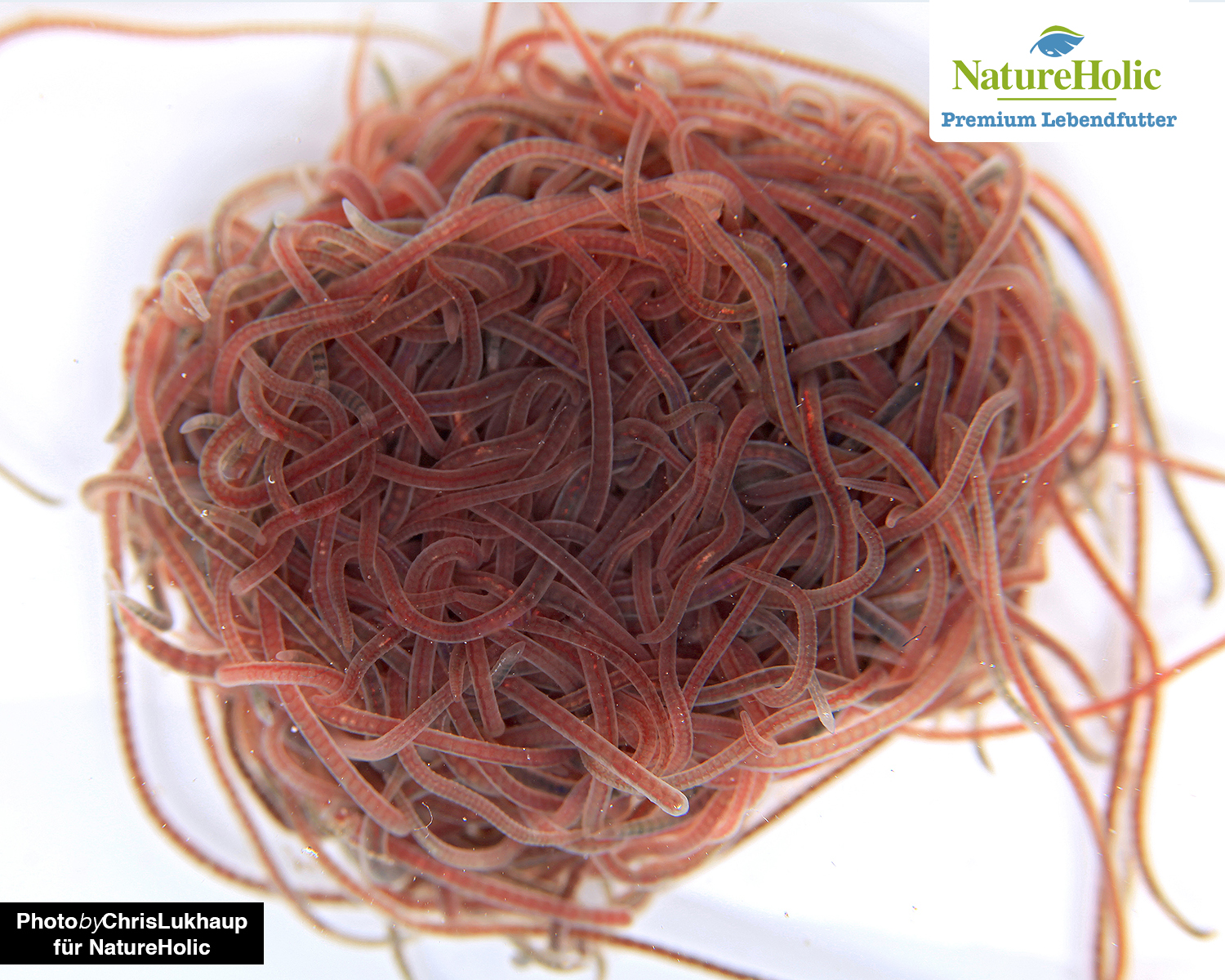
Who eats shiner worms?
Medium and large fish like to eat shiner worms, but crabs, shrimp and large-armed shrimp also like the worms a lot.
Breeding kit
We have a separate article on breeding shiner worms, in which we go into great detail on how best to maintain a breeding stock: "Catch and breed shiner worms easily" https://www.garnelio.de/blog/ernaehrung/anleitung-glanzwuermer-ganz-einfach-fangen-und-vermehren.
Value
Glossy worms are quite substantial and therefore should not be fed daily.
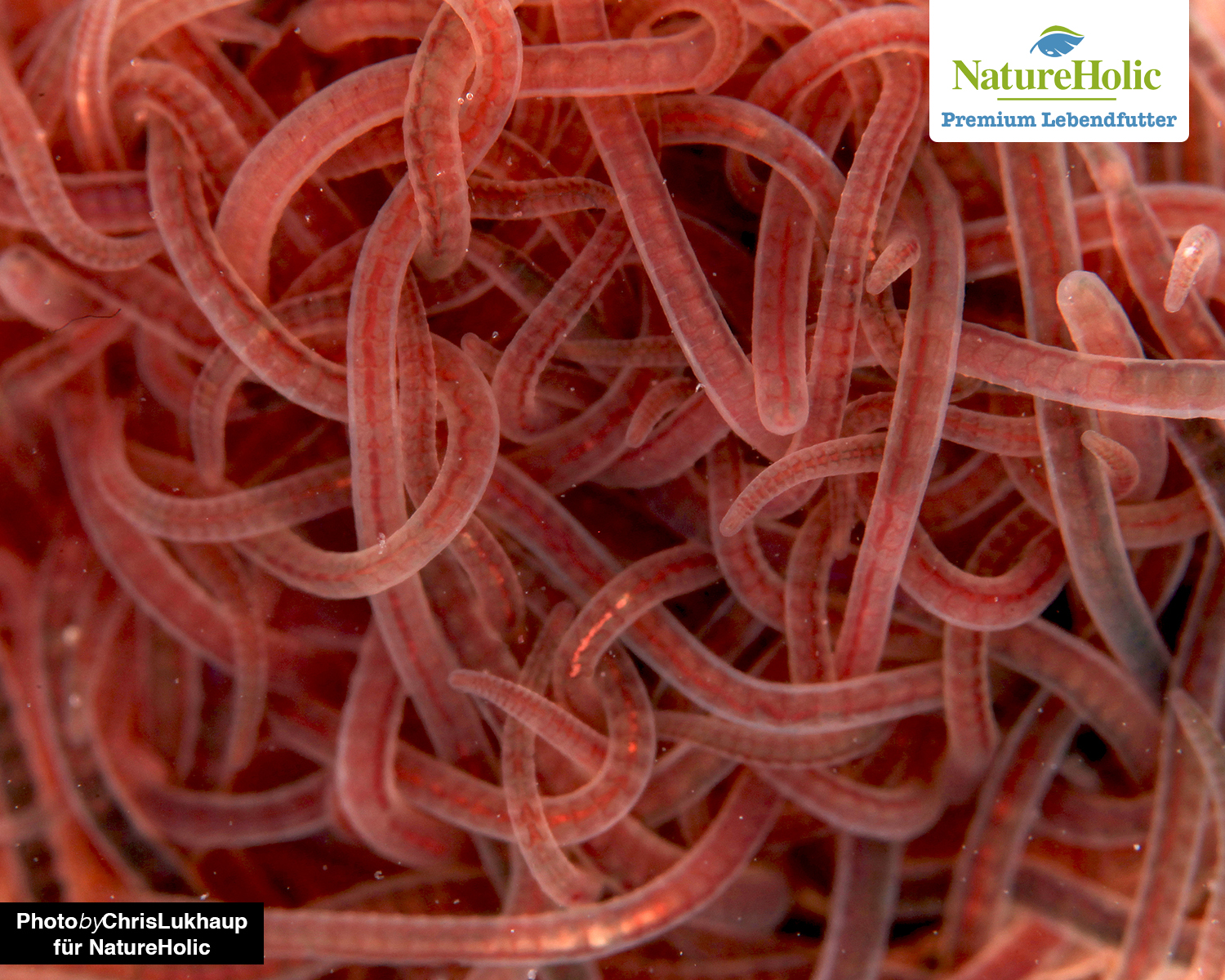
Enchytraea(buy)
Enchyträen also belong to the fewborsters. They contain a relatively high amount of fat and are therefore not a live food for every day. Enchyträen can be easily bred and are not odor-intensive.
Locomotion
Enchyträen crawl on the ground. They also survive underwater for up to two days.
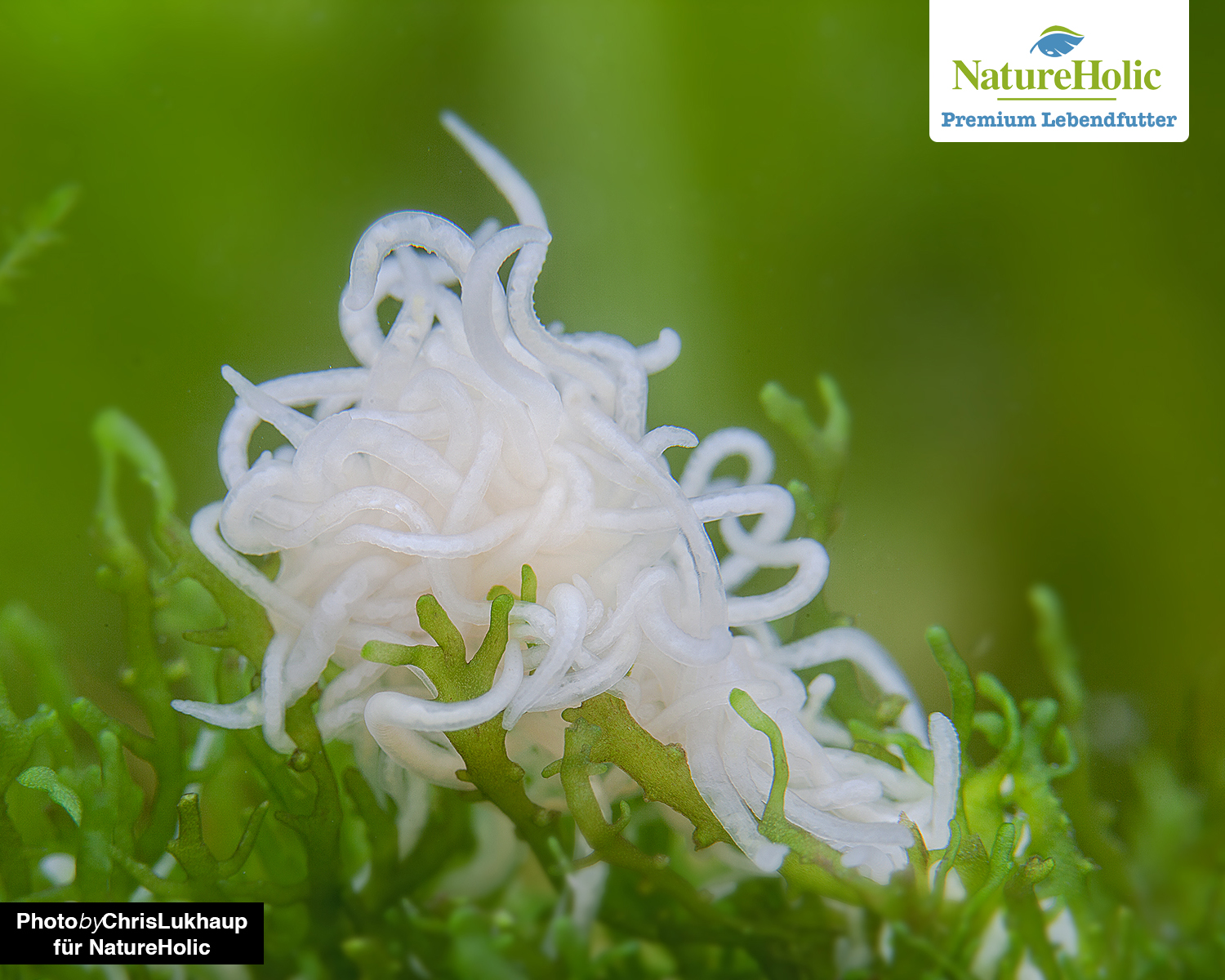
Food
Oatmeal, some dry yeast, moistened toast bread, baby cereal porridge, flake food, ..
Who eats enchytraea?
Small to maximum medium sized fish, as enchytraea sink in water, also shrimps and snails and small crayfish. Even juvenile fish can cope well with the soft worms.
Breeding kit
Enchytraea can be well bred in masses, for example, on seramis kept moist or on moist soil. The container should have small air holes in the lid, but should not be left open to prevent the worms from escaping. Feed with moistened oatmeal, dry yeast, moistened toast, baby cereal or similar. Be careful that mites do not spread in the batch and feed only as much as is eaten so that the batch does not become moldy.
If you put a small glass plate on the batch, the worms will collect there and can be removed largely without contamination. From time to time the batch should be divided and put on again with new substrate.
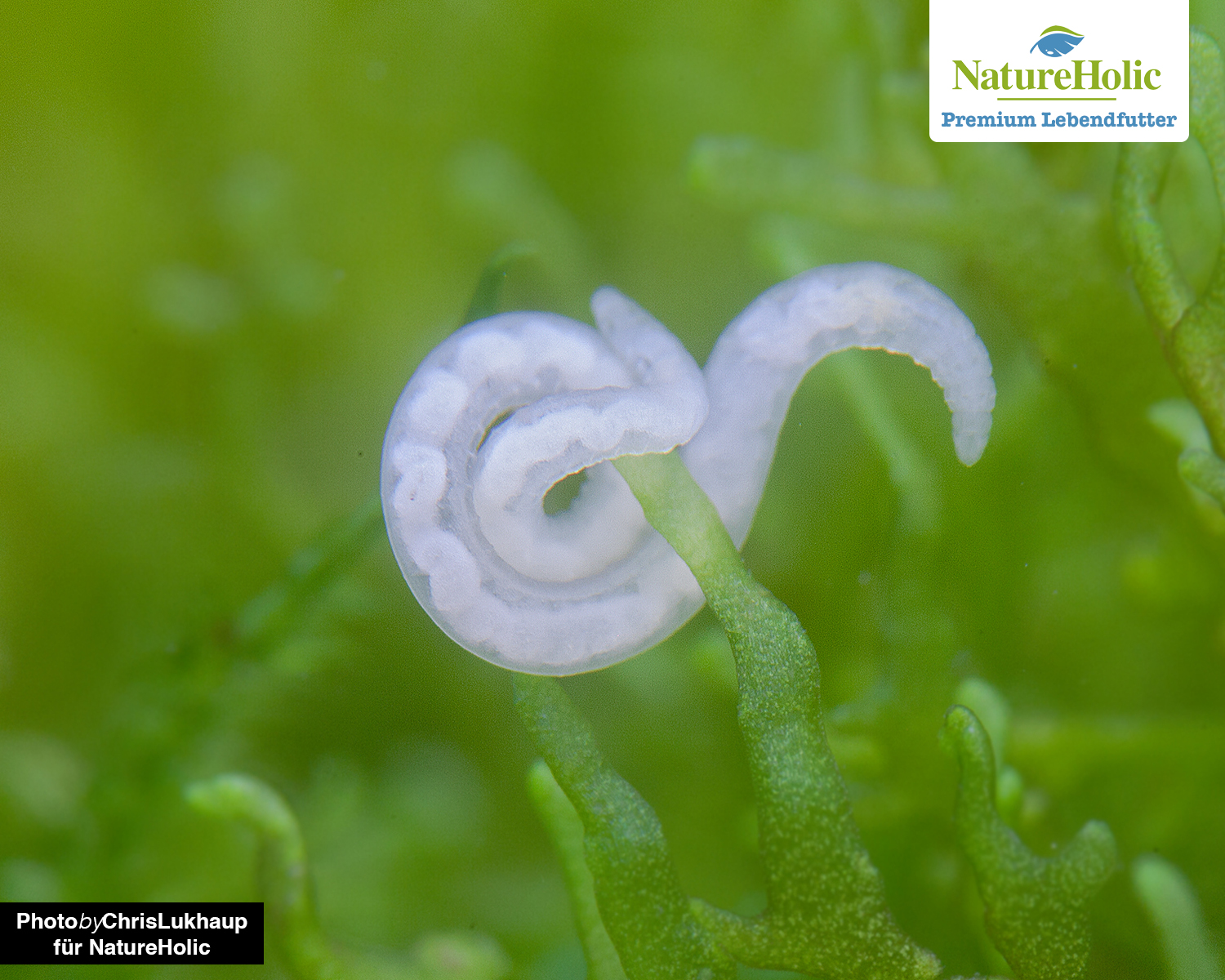
Value
Due to the relatively high fat and protein content, enchytraea are not a food for every day, but for a few times a week a good change and real power food for young fish.
Grindal
Grindal are closely related to enchytraea. Unlike enchytraea, however, they do not clump together in the water, they crawl apart, and they remain slightly smaller. Kept, fed, and bred like enchytraea.
Microworms / Banana worms
Microworms are nematodes and because of their very small body size, they are perfect for raising juvenile fish and - because they sink - also as a live protein snack for shrimp and snails. They are a bit too small for crayfish.
Locomotion
Microworms crawl. They sink quite quickly in the water.
Food
Oatmeal porridge, unsalted mashed potatoes, soaked toast, porridge made of breadcrumbs, some dry yeast ..
Who eats microworms?
Juvenile fish, small to medium sized fish, dwarf shrimp, snails, small juvenile crayfish
Breeding kit
Microworms live best in a mush of food. To do this, you can cook a porridge of fine oatmeal (let it cool before using!) or make a relatively liquid porridge of unsalted mashed potatoes. Very fine oatmeal can also be simply allowed to swell in water. Some cook the porridge in milk, but then the odor is even higher than it already is, and you can do it without milk. If the mixture really begins to stink, it is high time to divide it and start with new substrate.
Microworms are best harvested with a brush. Over time, they climb up the walls of the culture vessel en masse and can then be easily wiped off. Under no circumstances should the breeding substrate be put into the aquarium!
Value
Their high protein and fat content, as well as their small size and uncomplicated nature, make microworms a good rearing food for juvenile fish and a readily available live food for nano fish and shrimp. They should not be fed every day, however, as they are quite substantial after all.
Vinegarälchen
The tiny vinegar eels also belong to the nematodes. They are a good, fine natural food for fry and nanofish.
Locomotion
Vinegar eels can swim actively.
Food
Vinegar eels feed on sugars in alcoholic or acetic acid solutions.
Who eats vinegar eels?
Juvenile fish, nano fish to medium sized fish like to hunt the small nematodes. Since vinegar eels swim, they are less suitable for feeding to shrimp and dwarf crayfish, as well as bottom-dwelling juvenile fish.
Breeding mixture
50% water, 50% apple cider vinegar and a little sugar is sufficient. The acetic lice multiply in the liquid. If the multiplication decreases, a little sugar is added again. From time to time the mixture is divided and put on again.
Removal is a bit more difficult than with other worms. Since vinegar worms collect in the upper layers of the liquid when there is a lack of oxygen, you can simply remove them with a syringe and then drain them through a coffee filter (or add them directly to the aquarium with the syringe - however, the vinegar can cause problems with very sensitive fish).
Value
Vinegar peels contain relatively high levels of protein and fat and should not be fed on a daily basis.

